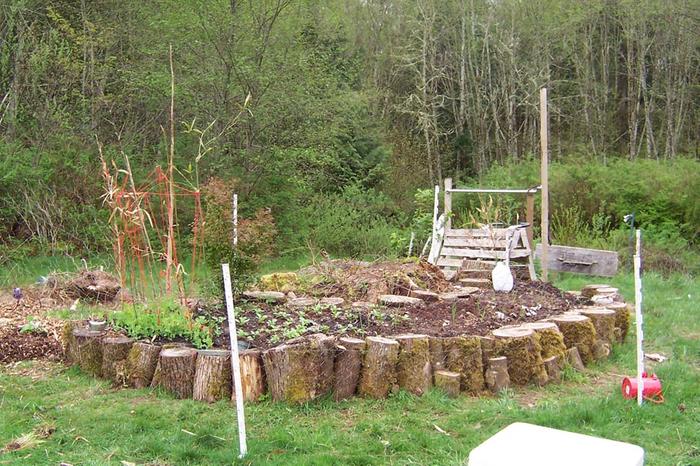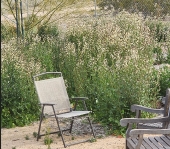




solarguy2003 wrote:
I had to make forms for footings (pouring cement). I bought the cheapest lumber to do it, SPF 2x10's SPF stands for Spruce, Pine, Fir. It's the cheapest 2x10 you can buy.
Since I wanted to remove the boards from the cement and reuse them, I used a cheap paint roller to treat them with...
soybean oil.
Used soybean oil in fact. I collect used fryer oil from restaurants to make biodiesel. It turns out it makes pretty decent, and very environmentally sound, wood preservative. They turn dark, but they don't rot. that was almost five years ago, and they're still going strong.
2x10's make a pretty decent raised bed, and not terribly heavy.
I'm not a huge fan of the fakie wood composite deck materials, even though it looks nice, for a while. It is definitely not as strong as wood wood.
HTH,
troy
 1
1




solarguy2003 wrote:
I had to make forms for footings (pouring cement). I bought the cheapest lumber to do it, SPF 2x10's SPF stands for Spruce, Pine, Fir. It's the cheapest 2x10 you can buy.
Since I wanted to remove the boards from the cement and reuse them, I used a cheap paint roller to treat them with...
soybean oil.
Used soybean oil in fact. I collect used fryer oil from restaurants to make biodiesel. It turns out it makes pretty decent, and very environmentally sound, wood preservative. They turn dark, but they don't rot. that was almost five years ago, and they're still going strong.
2x10's make a pretty decent raised bed, and not terribly heavy.
I'm not a huge fan of the fakie wood composite deck materials, even though it looks nice, for a while. It is definitely not as strong as wood wood.
HTH,
troy









www.thehappypermaculturalist.wordpress.com




www.nu-trac.info - new life tracks – growing organic, conservation, self reliance









 ). The bed in the picture is still in the process of being filled with organic matter. The goal is to fill it all the way up to the edge of the slug fence, so the bed will be about one foot high.
). The bed in the picture is still in the process of being filled with organic matter. The goal is to fill it all the way up to the edge of the slug fence, so the bed will be about one foot high. 1
1




 4
4





 3
3




 2
2




Real funny, Scotty, now beam down my clothes!








maria McCoy wrote:Besides hugelkulture, how have you made raised beds?
$10.00 is a donation. $1,000 is an investment, $1,000,000 is a purchase.
 1
1




Argue for your limitations and they are yours forever.
 3
3




Real funny, Scotty, now beam down my clothes!
 5
5




 5
5




Working toward a food forest and self sufficiency in Western Oregon.
 7
7




Working toward a food forest and self sufficiency in Western Oregon.
 3
3





 4
4




Some places need to be wild
 4
4




 3
3




Irene Kightley wrote:I make them from chestnut poles cut on site and as our land is on a slope I terrace, working around the tree roots



I've also made them from tree roots dug up by the pigs and too beautiful to burn. (This bed has a hugelkultur base and is now seven years old and I didn't water it at all last year.)

Paul I've just made more growing space which covers a lawn and after we put the new poles down I pull the stones and wood towards the edges and more and more compost (helped by the chickens) makes it's way by gravity down the slope to the raised bed. I'll mulch just before planting.

The mulch also goes on the paths and the chickens clean them regularly so the lawn will disappear completely between raised beds.

|
Check your pockets for water buffalo. You might need to use this tiny ad until you locate a water buffalo:
montana community seeking 20 people who are gardeners or want to be gardeners
https://permies.com/t/359868/montana-community-seeking-people-gardeners
|







